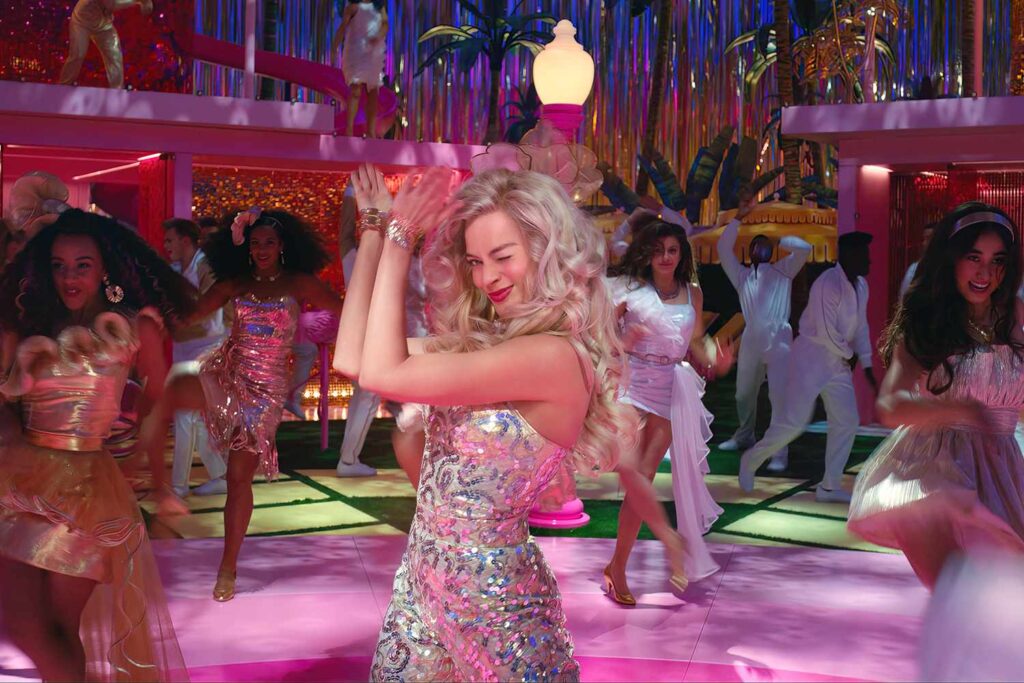Women’s bodies present a special problem for death denial—and these concerns motivate patriarchal cultures to seek control of those bodies from women themselves.

Awards season is here, and while it first it seemed like Barbie would rake in quite a few, after securing more Golden Globe nominations than any other film this year, it now looks as though Gerwig’s film may get passed over for final awards and end-of-year “best of” lists, despite its overwhelming box office popularity. Perhaps critics could not allow for a seemingly shallow storyline to carry such a deeply existential, feminist message. Some will call it sacrilege for us to compare Barbie, a film that appears to celebrate artificiality and superficiality, with the deeply noir multiple award-winning film many say is the greatest of all time, Citizen Kane. However, we suggest that both films are owed acclaim for the risks their directors took in broaching the most anxiety-provoking of all human concerns: death.
Both Orson Welles and Greta Gerwig deliver their existential message through toys—but where Rosebud the sled restores the dying Kane’s lost promise of masculine youth, Barbie the doll depicts the central thesis of our work as feminist social psychologists: that fear of death that undergirds the control of women and their bodies, and women’s own efforts to conform to societal expectations for their bodily control. Considered this way, Barbie is relevant not only to the impending decisions of the Academy of Motion Pictures, but also to the Supreme Court, as they are once again set to adjudicate women’s right to manage their own reproductive bodies.
In a world without genitals or death, women are valued and respected, they are the president, the Supreme Court and Nobel Prize winners.
In our field of social psychology, terror management theory offers an existential framework for viewing the world, with empirical research to back up its claims. The gist is that, unlike dolls, humans are aware of the inescapable fact that they are going to die. This existential threat is quelled by creating and immersing ourselves in a contrived, artificial world that offers an illusion of immortality. As Barbie’s creator Ruth Handler explains to her in the film, “Ideas live forever. Humans, not so much.”
Women’s bodies present a special problem for death denial, with their monthly bleeding, lactation and pregnancies. And what women’s bodies giveth, they can take away. In our research, we find that death concerns are what motivate the patriarchal oppressive contrivances of objectification and self-objectification. Objectifying “strips” women’s bodies of their more natural, mammalian, and hence threatening mortal qualities, emphasizing an idealized, contrived attractiveness.
Not only are women treated this way, but they also come to treat themselves this way, investing time and resources in attaining flawless, symbolically immortal beauty.
In the film’s opening sequence, we learn that girls in prehistory played with baby dolls, but when Barbie hit the scene, they eagerly (violently) traded pretending to care for infant dolls for fashioning themselves after adult, anatomically incorrect ones. Welcome to Barbieland, where it’s “fun and work and friendship 24/7,” a cinematic test of our theory: In a world without genitals or death, women are valued and respected, they are the president, the Supreme Court and Nobel Prize winners.
Fear of death that undergirds the control of women and their bodies, and women’s own efforts to conform to societal expectations for their bodily control.
Life in plastic is fantastic—until everything comes to a screeching halt. Mid-dance number, after talking about how each day, and each day to come (in a nod to existentialist Nietzsche’s eternal recurrence), is the best day ever, Barbie asks the other Barbies, “Do you guys ever think about dying?” The music stops. The illusion is punctured. And the next morning, her natural body asserts itself. She has bad breath, flat feet, and the first little dimples of cellulite—in short, a full-on existential crisis.
Weird Barbie helps our heroine choose the Birkenstock over the stiletto, place her feet fully on the earth, and take a brief foray with Ken to reality.
In the Real World, Barbie gets objectified, experiences self-consciousness tinged with fear, and learns that women feel bad about themselves for not living up to the contrived standards which she represents. She visits Mattel Headquarters, where consumer capitalist patriarchs manufacture their death-denying sausage in the form of empowerment feminism because they “love women.” Here she learns that, like Midge and Growing Up Skipper, whose conceits of pregnancy and breast development cut a little too existentially close to home, “Proust Barbie” didn’t sell well either.
Meanwhile, Ken experiences the thrill of Real-World masculinity, gleefully figuring out that gender roles are “reversed here.” And when he returns to Barbieland, he brings the patriarchy back with him, establishing Kendom, where Kens are in charge, and Barbies find relief in “giving their brains a break” by wearing bikinis, cheerleader’s and maid’s uniforms and serving their Kens “brewskie beers.”
The film’s Real World and Kendom reflect our experiments—in which when we remind people of their mortality, we find men scale up their objectification of women, preferring advertisements where women’s bodies are merged with products like beer bottles. When reminded about women’s reproductive functions, such as menstruation, we also see increased objectification, with folks tying women’s worth to their beauty and appearance more strongly, and with women associating themselves with characteristics descriptive not of human beings, but of objects.
And like the Barbies of Kendom, women who self-objectify are less likely to see gender inequality as a problem or vote in their own best interest—because objects don’t object to the patriarchy.
From Barbie’s very first tear that felt “achy, but good,” she begins to recognize that being plastic comes at a price. For her, there’s no getting back in the death-denying box, no matter how nostalgic it smells. So even after working to restore Barbieland to its neoliberal, empowerment feminism utopia, she has to make a choice: Stay perfect, plastic and immortal in Barbieland—or become human.
“You understand that humans only have one ending,” Ruth said. Holding hands with her creator, Barbie sees a vision of ordinary girls and women who have not chosen to deny death by investing in the plastic world of self-objectification. Some are young, some old, some are laughing, some crying, some are fat, some thin. All are human, all too human. When Barbie opens her eyes, she chooses Reality. She chooses mortality.

The final scene of the film enlists viewers in wondering what downtown appointment Barbie is rushing to make, and the reveal could not be more illustrative of our existentialist feminist perspective, nor more well timed to the moment in which we find ourselves: holding our breaths not for award nominations, but for the highest Court in the land to hear an appeal regarding medication abortion in the wake of the Dobbs decision.
Because real women live in the bodies that can create and sustain life, cultures fear and thus seek to wrest control of those bodies from women themselves. Barbie the doll symbolizes that control in the form of objectified beauty, and instructs girls in self-control through self-objectification.
But Barbie, the real woman, starts her mortal human journey at an appointment with the gynecologist—which is, of course, a much more appropriate place than a politician’s office or a courtroom for such a journey to begin.
Up next:
U.S. democracy is at a dangerous inflection point—from the demise of abortion rights, to a lack of pay equity and parental leave, to skyrocketing maternal mortality, and attacks on trans health. Left unchecked, these crises will lead to wider gaps in political participation and representation. For 50 years, Ms. has been forging feminist journalism—reporting, rebelling and truth-telling from the front-lines, championing the Equal Rights Amendment, and centering the stories of those most impacted. With all that’s at stake for equality, we are redoubling our commitment for the next 50 years. In turn, we need your help, Support Ms. today with a donation—any amount that is meaningful to you. For as little as $5 each month, you’ll receive the print magazine along with our e-newsletters, action alerts, and invitations to Ms. Studios events and podcasts. We are grateful for your loyalty and ferocity.





